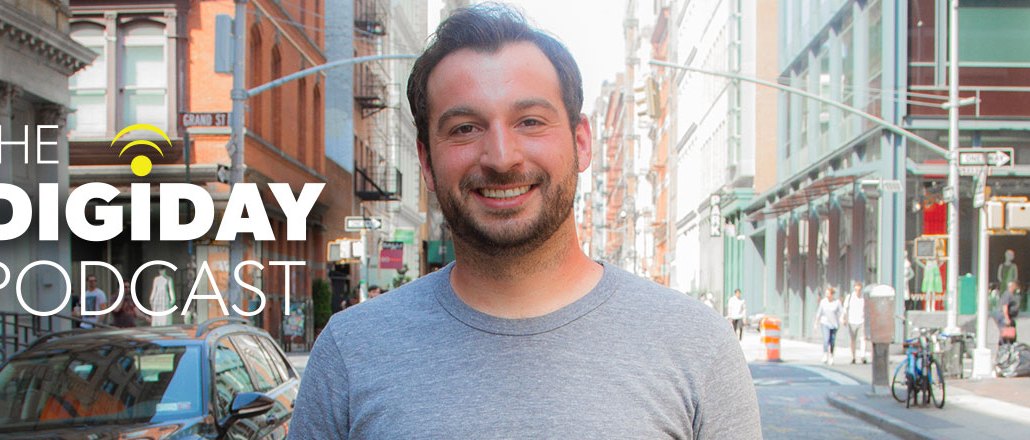Save 50% on a 3-month Digiday+ membership. Ends Dec 5.

Subscribe: iTunes | Stitcher | RSS
At a time when publishers are being forced to understand how to make money beyond the traditional methods, the Washington Post is going all in on internal technology.
In this week’s Digiday Podcast, Jarrod Dicker, head of ad product and technology at the publisher, said that ad tech can work when it comes to programmatic, but publishers should be willing to build their own tech where necessary.
That’s what has led to the growth of Red, the Post’s internal product arm behind products like Fuse, ad tech that lets users open ad units and stay within the app, like Facebook Instant Articles. “The benefit is we want to make advertising faster,” he said. “We have a full commitment to make our content faster already. Now we have to figure how to build ads that will make money.”
Edited highlights below.
The publishing industry today is like the music industry in the ‘90s.
Dicker said he and the Washington Post have the flexibility to identify trends in the marketplace. He likened the publishing industry and the ad industry to where Napster and Kazaa where in the 1990s. “It could go one of two ways: It could collapse, or we could see it as a catalyst,” he said. The company is betting on the latter and allocating serious resources to building consumer ad products, he said.
Ad position: web_incontent_pos1
Publishers brought the current instability upon themselves.
Back in the day, advertising had the leisure to be big and beautiful because it had the canvas of magazines and newspapers. Publishers were creative when it came to engaging users. Now, going to desktop, then mobile — and on to virtual reality or chatbots — Dicker said nobody made the effort to talk to marketers and ask for a different way to approach these platforms. “We’ve just taken the old approach and squeezed it into a new environment,” he said. “There isn’t attention being paid to advertising products.”
Ad blocking may become a positive development.
It’s hard for publishers to go to clients — who are paying them — and say, “Let’s not put 50 ad calls in a creative just to collect audience data,” said Dicker. But ad blocking is “pushing us to think differently about how we create products,” he said. At Washington Post, the CMS, called Arc, incorporates technologies, for example. So unlike other content management systems that have to live within a closed tech circuit, the Post can have different technologies communicate. And these can be ad products sold to other publishers, too. “I don’t believe we should be relying on third-party tech to deliver quality.”
Arc is a growing revenue stream.
Publishers are loathe to ditch their CMS, which is fair. But Dicker said that the Post’s products don’t force them to. “We’re not saying you have to ditch [your stack],” he said. “We can be a bridge. What differentiates us is we sympathize and understand that chain of technologies publishers are using.” And the Post’s operation itself can be a proof point. “With ad blocking and distributed channels, we need to experiment with different capabilities we can go out there and bring to market,” he said.
Dicker thinks this is an opportunity to move the industry forward.
Ultimately, the issues are ones platform behemoths like Facebook and Google have to solve. When the Post launched on Progressive Web Apps, content loaded in 80 milliseconds. Ads took four to five seconds. That gap allows the fraud and viewability issues to click in. “It’s fun to solve this,” said Dicker, who acknowledged that this is ultimately a problem for Google to fix. “But the opportunity to be at the forefront of this change is great.”
More in Media

Digiday+ Research Subscription Index 2025: Subscription strategies from Bloomberg, The New York Times, Vox and others
Digiday’s third annual Subscription Index examines and measures publishers’ subscription strategies to identify common approaches and key tactics among Bloomberg, The New York Times, Vox and others.

From lawsuits to lobbying: How publishers are fighting AI
We may be closing out 2025, but publishers aren’t retreating from the battle of AI search — some are escalating it, and they expect the fight to stretch deep into 2026.

Media Briefing: Publishers turn to vertical video to compete with creators and grow ad revenue in 2026
Publishers add vertical video feeds to their sites to boost engagement, attract video ad spend and compete with news creators.
Ad position: web_bfu
